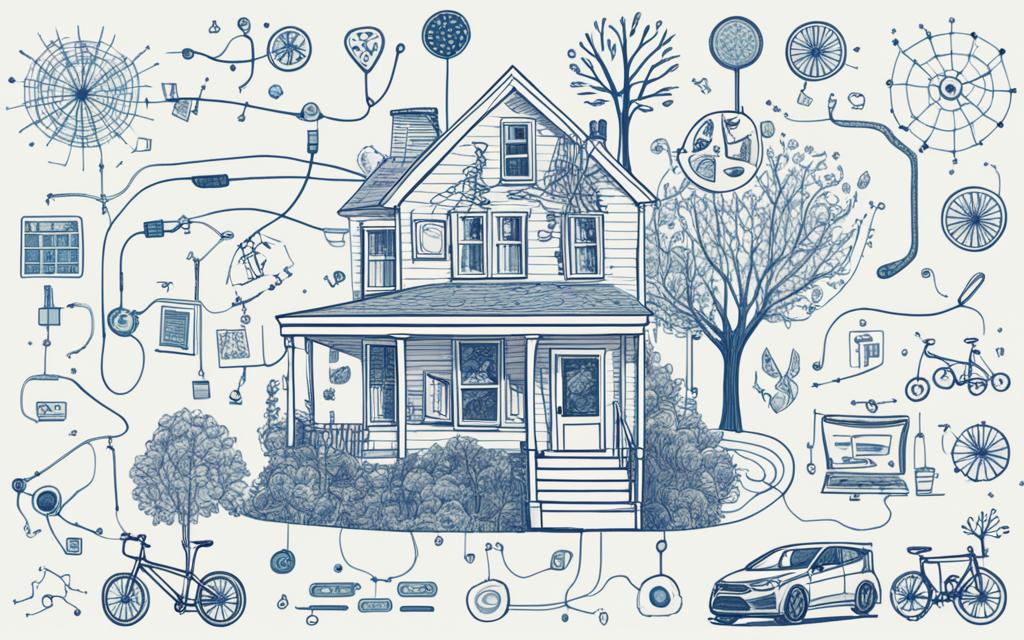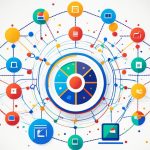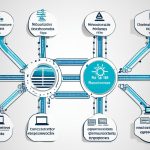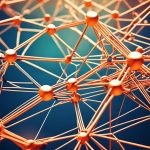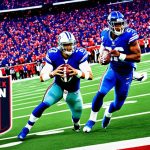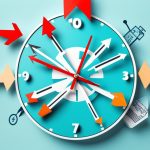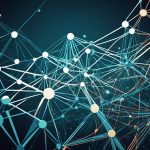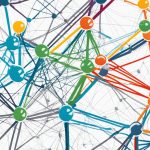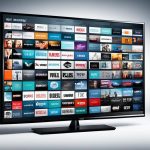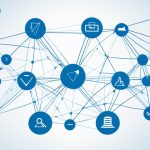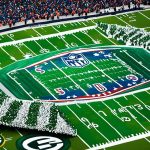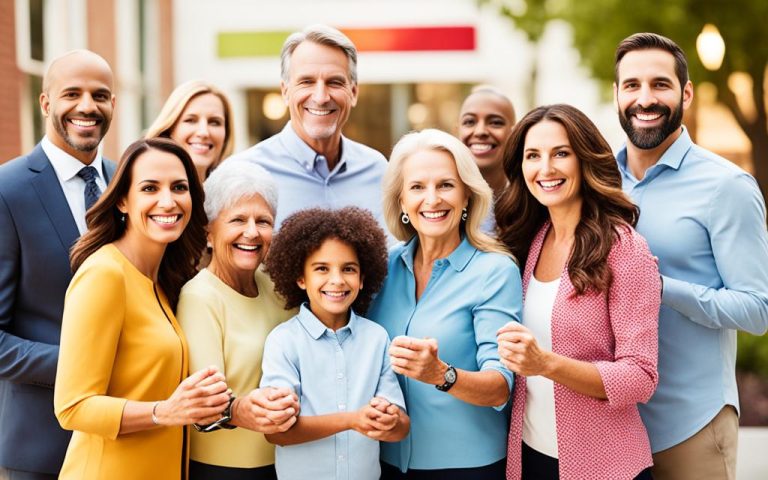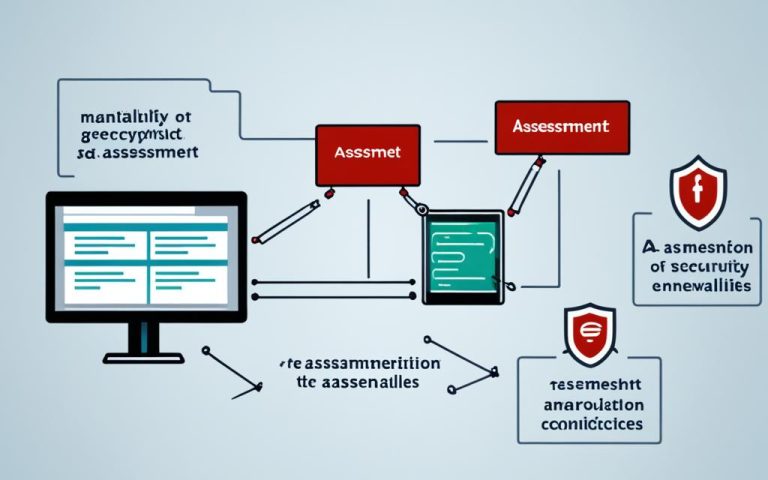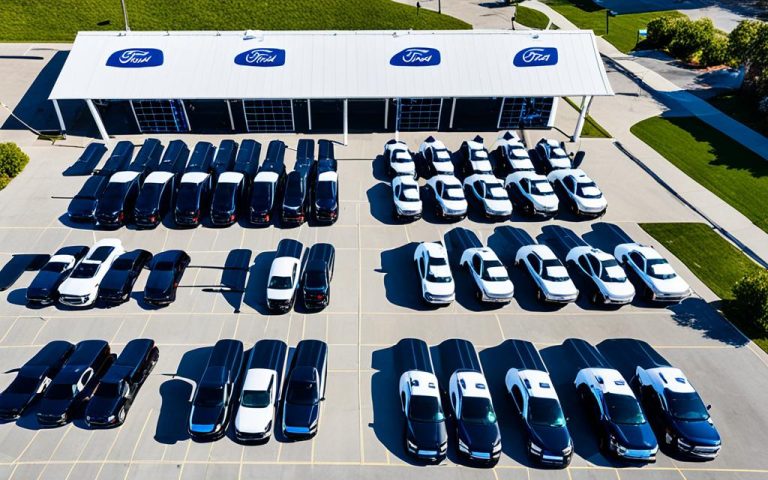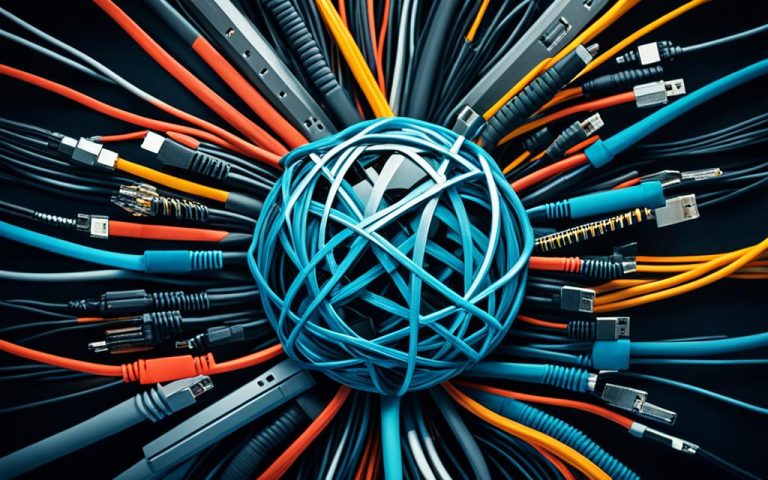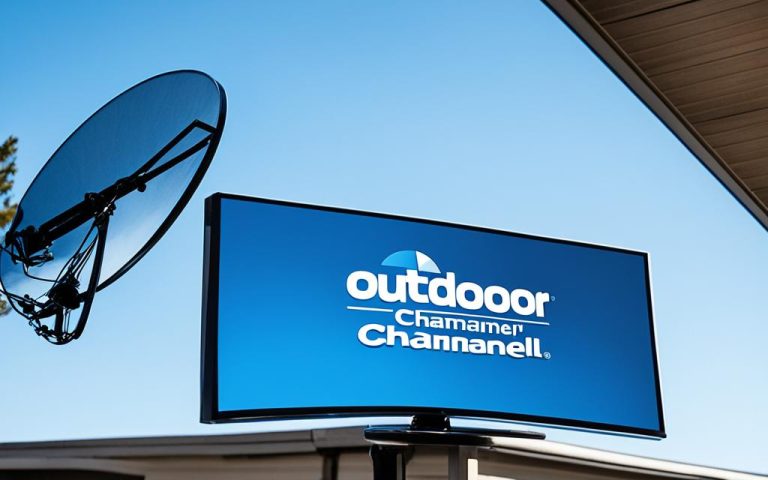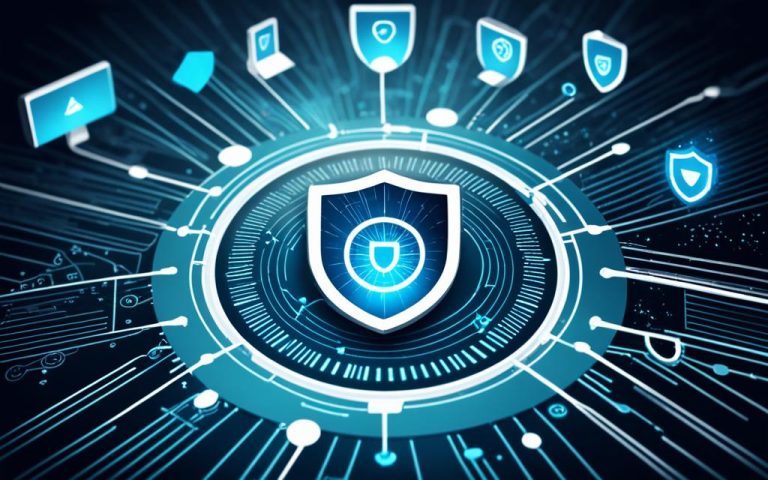Doodling, or creating spontaneous drawings, has caught the eye of neural networks. We’ll look into doodling and see if neural networks can learn to recognize these doodles. This mix of art and tech shows the potential of neural networks in recognizing doodles.
Over time, doodling has grown from a simple hobby to a big deal. Games like Google’s “Quick, Draw!” and Icons8’s doodling game have drawn in millions, creating thousands of doodles1. This gives researchers and engineers a lot to study, like patterns and techniques, which neural networks can use.
Researchers have studied doodles, like those of elephants, to understand them better. They found that people often switch to right-brain mode when drawing elephants, making their drawings very accurate1. Elephants were copied more often than other animals, showing a special interest in their unique look.
Knowing about animals affects how people doodle. Animals like turtles, cats, dogs, and horses are often drawn based on what people think they know about them1. The more someone knows about an animal, the more likely they are to stick to certain drawing styles.
Feelings also show up in doodles, especially when drawing animals like pigs, cats, dogs, and horses in left-brain mode. These drawings have more emotional and sudden lines, showing a deep connection to these animals1. Horses were found to be particularly hard to draw, with many giving up easily, showing the challenge in capturing their true nature1.
Key Takeaways:
- Doodling is now a big activity, with games like “Quick, Draw!” and Icons8’s doodling game creating thousands of doodles.
- Studies on subjects like elephants show that people often switch to right-brain mode, making accurate copies.
- Animals like turtles, cats, dogs, and horses are often drawn with stereotypes based on what people think they know.
- Emotions show in doodles made in left-brain mode for certain animals like pigs, cats, dogs, and horses.
- Drawing horses is a big challenge, with many finding it hard to capture their true nature.
Looking into doodling and its link with neural networks gives us new insights into human creativity and deep learning models. Next, we’ll dive into the dataset for doodle recognition, data cleaning, predictive modeling, and the challenges of recognizing doodles. Get ready for an exciting look at how art and AI come together.
The Power of Deep Learning Models
Deep learning models have changed how we analyze doodle images. They help us understand and sort through the huge amounts of data in the Kaggle doodle dataset2. These models use convolutional neural networks (CNNs) to make image recognition and classification better and faster.
In the Kaggle doodle dataset, with over 1 billion drawings and 340 labels, deep learning models classify doodles very well. They use networks like MobileNet and ResNet to spot differences and find patterns in doodles2.
Deep learning models are great at handling lots of data and finding important features on their own. They can have hundreds of hidden layers, which lets them learn in a more complex way3. This helps them see the small details in doodles, making them better at classifying them.
Deep Learning Models and the Black Box Conundrum
Even though deep learning models work really well, they’re often seen as “black boxes” because they have so many parameters2. They learn complex things from the data but it’s hard to understand how they make their predictions.
But, researchers are working on making these models more transparent. They’re using methods like spatial fractal analysis and principal component analysis to understand what the models are doing2.
The Success and Limitations of Deep Learning Models in Doodle Recognition
Deep learning models are really good at putting doodles into different categories2. But, they’re not always easy to understand. Their complex design and many parameters make it hard to see why they make certain predictions.
Despite this, deep learning is leading to more research and better models. People are working to make these models easier to understand without losing their ability to process doodles well. Finding the right balance between understanding and performance is key in deep learning.
Problem Introduction
Artificial intelligence has made huge strides in many areas, including doodling recognition. Doodling means drawing simple sketches for fun or without thinking. These doodles can tell us a lot when analyzed with neural networks.
Quick, Draw! is a game by Google Creative Lab and Data Arts Team that shows how AI works. Players draw pictures and a smart model tries to guess what they drew. This game has created the biggest doodling dataset ever.
Creating models that can correctly label doodles is a big challenge. It’s not just about recognizing shapes. Neural networks, like the human brain, help us understand doodles better.
Statistical data4 shows neural networks work like our brains. They make decisions for tasks like recognizing faces and writing. They can accurately recognize handwriting and adjust to minimize mistakes.
Neural networks have made big strides in recognizing doodles too. They handle the complexity of doodles better than simple algorithms. Researchers are improving these networks to better understand doodles.
Statistical data5 highlights the importance of recognizing art and paintings. Researchers have developed new algorithms to improve this. These algorithms use artistic styles and neural networks to make better decisions.
Hidden layers in neural networks are key to recognizing doodles well6. shows how these layers help identify different parts of a doodle. This leads to better recognition of what the doodle is.
The Complexity of Doodle Recognition
Understanding doodles requires a deep look at their details. Every line and curve in a doodle means something. Neural networks use weights and biases to capture these details.
This approach helps the network recognize doodles accurately. By fine-tuning these settings, we can improve how the network works. This makes the network more efficient and transparent.
The journey of recognizing doodles with neural networks is exciting. It helps us understand the human mind and has many practical uses. With AI and the Quick, Draw! dataset, we can unlock the secrets of doodles and gain new insights.
Data Description
The doodle dataset is huge, with over 1 billion drawings in 340 label classes7. It’s a goldmine for researchers and developers looking into doodle recognition. The data comes in CSV files, perfect for structured data7. These files have both raw and simplified vector formats, making it easy to use for training and testing7.
Each point in the dataset has a “word” label and a matching “drawing” with x and y points7. This makes the drawings easy to process and analyze7. The dataset is huge, at 227.61GB, showing the vast number of doodles collected7. Using the simplified vector format helps save memory and speeds up processing7.
Quick Draw Dataset Overview
| Data Format | Description |
|---|---|
| Raw Files (.ndjson) | Contains the original data points in a newline-delimited JSON format |
| Simplified Vector Format | Preprocessed version of the data for ease of use and memory efficiency |
| Binary Format | Simplified data in a binary format, optimized for efficient storage |
| 28×28 Grayscale Bitmap (.npy) | Numpy format bitmap representation of doodles for processing and analysis7 |
The doodles are in a 28×28 grayscale bitmap format, perfect for processing and recognizing them7. It’s a great replacement for old MNIST data processing code7. This format lets researchers work with over 300 doodle classes, opening up many new uses for the dataset7.
Those interested in the Quick Draw dataset can find tutorials on using Recurrent Neural Networks (RNNs) for doodle analysis7. These tutorials offer great insights and methods for using the dataset fully. The Facets tool is also available for visualizing and exploring the data, helping users compare drawings across various categories and players worldwide7.
Data Cleaning
Working with big datasets in image recognition is key to getting the best results. It’s important to clean the data well to deal with RAM and GPU limits, and to make data processing faster. Let’s look at how to do this:
RAM Restrictions
Big datasets and limited memory mean we need special strategies. Shuffling and splitting the data into smaller parts helps manage it better. Using Numpy arrays for matrix operations also speeds things up8.
GPU Restrictions
Using GPUs to process big datasets quickly is crucial. To get past GPU limits, we can use NVIDIA CUDA-X AI for faster data processing. This boosts model training and inference, making the image recognition system work better9.
Data Processing Techniques
For image recognition to work well, we need to process the data right. Cleaning the dataset means doing several things, like:
- Standardizing Images: There are different ways to make images the same size for neural networks. This makes sure the data fits the model9.
- Data Augmentation: This makes the model more accurate and prevents it from getting too specific. It creates new images by changing them in different ways. This makes the dataset more varied, helping the model learn from more examples9.
Using these techniques and solving RAM and GPU issues improves data cleaning. This leads to better model performance and accuracy. By optimizing how we process data, image recognition systems can handle big datasets better89.
Predictive Modeling
We looked into different modeling techniques for our doodle recognition system. We used a simple Convolutional Neural Network (CNN)10. Choosing the right number of epochs and step sizes was key to get accurate and efficient results.
The simple CNN model had about 1.1 million parameters and hit an accuracy rate of 70%10. We also tried reducing the learning rate and saving model weights to boost our doodle recognition system’s performance. These steps led to great results.
We didn’t stop at the simple CNN model. We also tested ResNet and MobileNet to see what they could do. The MobileNet model was as accurate as the simple CNN but ran faster10.
To make our modeling efficient, we started training on a part of the full dataset10. This cut down the training time without hurting the model’s performance. Then, we made all strokes in the dataset the same size, from 0 to 1, to train the network better10.
Our model had Convolutional Layers, Recurrent Layers (LSTM), and Dense Layers. These layers worked together to make our system better and more accurate10. This design was crucial for our doodle recognition system’s success.
To test the model, we made the drawing points simpler, removed extra padding, and scaled the images for better predictions10. These steps helped our predictive modeling work well.
Our work led to a doodle recognition system that was very accurate. It could predict doodles with great precision, like a 1-player Pictionary game10. This shows how powerful Convolutional Neural Networks can be in recognizing doodles.
Our Journey with Sketch Recognition
We are a team of Pei-Hsin Ho, Gina Huh, Shayna Patel, Matt Viteri, Kai-Ju Yu, and Tianyi Zhang. We started an exciting journey into the world of sketch recognition.
The Google Quick, Draw! dataset was our starting point. It has over 50 million drawings in 340 categories. We dove deep into this treasure trove of art, learning a lot about human doodling.
We tried different classifier models to understand their strengths and weaknesses. We looked at classic methods and advanced models like the Multi-Layer Perceptron (MLP). This helped us grasp how to recognize and classify doodles.
We built a simple Convolutional Neural Network (CNN) model. It had nine layers, including convolutional and max-pooling layers. This model was our first step into deep learning for sketch recognition.
We trained our CNN on 16,200 samples and tested it on 1,800. This model became key to our exploration of sketch recognition.
We also looked at the MobileNet model, which is smaller and faster. It was trained on the same data as our CNN model. MobileNet showed us how to make models faster and more accurate.
With our training, we got better at predicting what sketches would be. We used cross-validation to check our models. Around epoch 8 or 9, we saw our models get better at recognizing sketches without overfitting.
Our work in sketch recognition opened up new ideas and challenges. We found research on Sketch-a-Net, a program that recognized sketches better than humans. It was 74.5% accurate, beating human levels.
Sketch-a-Net was especially good at recognizing certain things like “seagull.” It showed how AI can capture details that humans miss.
The team used a huge dataset of 31,000,000 sketches to train Sketch-a-Net. This helped it learn to recognize many different strokes. This dataset showed us the huge potential of sketch recognition.
Sketch-a-Net was different because it worked with sketches drawn stroke by stroke. This approach changed how we see sketch recognition.
The team tweaked each image to help Sketch-a-Net recognize sketches better. This creative process taught us about the power of image augmentation.
| Dataset Information | Neural Network Configuration | Training and Validation Results |
|---|---|---|
| Dataset: 50 million drawings across 340 categories | CNN Sequential Model: 9-layer model, including convolutional, max-pooling, and dropout layers | Training Accuracy: Increased with epochs around 8 or 9, avoiding overfitting |
| MobileNet Model: Designed to reduce model size and complexity | Validation Accuracy: Sustained optimal performance and accuracy |
Our journey in sketch recognition is ongoing. We’re inspired by human and AI creativity. Our work shows the vast possibilities in neural networks and doodling.
Challenges in Recognizing Doodling
Doodling is hard for neural networks because it’s not structured. It’s full of random strokes and shapes. These networks are trained on structured data and find doodles tricky to recognize11.
Existing neural networks struggle with doodling because they’re not used to its informal style12. They might focus too much on formal features and miss doodling’s unique traits12.
“Doodling serves as an ‘anchoring task’ that complements well with another task, aiding in reducing tension in a formal lecture set-up” – Brown, 2014.
Specialized approaches are needed to recognize doodling’s informal nature. Techniques like convolutional neural networks (CNNs) are promising for doodle recognition13. CNNs are great at image recognition and can capture doodles’ unique features13.
It’s important to know that current neural networks have limits in recognizing doodles. Training with a small image set can affect their accuracy11. The size and variety of the training data are key to recognizing different doodle styles11.
Despite the challenges, machine learning and image recognition are getting better. Training models with more data and exploring new architectures can improve doodle recognition.
Recognizing Doodling in the Context of Education
Doodling is important in education. It helps learners stay focused and engaged in class12. When lectures are dull, doodling keeps the mind active12.
| Anchoring Task | Synthesizing Information | Fluid Idea Capture |
|---|---|---|
| Doodling serves as an ‘anchoring task’ that complements well with another task, aiding in reducing tension in a formal lecture set-up |
Doodling in teaching can help in synthesizing large amounts of information into easily digestible forms to sustain active participation of learners in the classroom |
Sketching allows capturing fluid ideas and refining them continuously |
Doodling helps learners make complex information simpler12. It lets them share their thoughts through drawing12. Sketching helps refine ideas, making thinking clearer12.
Teachers can use doodling to make learning fun and creative12. By embracing doodling, they can reach students in different ways, improving how well they remember information12.
In conclusion, doodling is challenging for neural networks but offers chances for improvement with machine learning. Understanding doodling’s value in education can help teachers make learning more engaging and effective.
Conclusion
Doodling recognition with neural networks is a growing field with big potential. It could change many industries. Deep learning models like CNNs and RNNs are making doodle recognition more accurate14. With a dataset of 50 million drawings, researchers have made great strides in classifying doodles15.
When checking how well doodle recognition works, we use special metrics. We also consider how doodles are subjective. Tools like Feature Visualization and Deep Dream help us see what neural networks see. This could lead to new ways in art and design14.
Even with progress, there are still challenges in recognizing doodles well. We need to keep improving neural networks14. This means making them more reliable and accurate with different doodles. Using doodle recognition in education, art, and design could make learning and creating more fun.
In summary, combining doodling with neural networks opens up new ways to understand and use doodles. With more research and tech advances, we can fully tap into neural networks’ potential. This could lead to a future where doodles are used in many areas.
For more on sensory optimization, check outthis link. For the Quick Draw app by Akshay Bahadur, visitthis link. For info on neural networks for image recognition, seethis article.
FAQ
What is doodling recognition?
Doodling recognition is when neural networks can spot and sort out random and abstract drawings. These are called doodles. It’s about training deep learning models to recognize doodle images and put them into specific groups.
How are deep learning models used in doodle recognition?
Deep learning models like CNN, MobileNet, and ResNet are used for doodle recognition. They learn from big datasets, like the Kaggle doodle dataset, to accurately predict and sort doodle images.
What is the Google Quick, Draw! dataset?
The Google Quick, Draw! dataset is the biggest doodling collection out there. It has over 50 million drawings in 340 categories. It was made from an online game called “Quick, Draw!” by Google Creative Lab and Data Arts Team.
How is the doodle dataset structured?
The doodle dataset comes in CSV files and has both raw and simple vector formats for training and testing. Each entry has a “word” label and a “drawing” made of x and y points. It’s huge, at 227.61GB, and the simple vector format makes it easier to use and saves memory.
How was the large doodle dataset processed to handle computational restrictions?
To deal with RAM limits, the dataset was shuffled and split into smaller parts. Numpy arrays helped with fast matrix operations. A generator function was used to save memory by creating data points on the fly. Data augmentation was used to avoid overfitting, and NVIDIA CUDA-X AI sped up processing on GPUs.
What models were used in doodle recognition, and how did they perform?
Models like a simple CNN, ResNet, and MobileNet were used for doodle recognition. Choosing the right number of epochs and step sizes was key for good accuracy and efficiency. The simple CNN model hit 70% accuracy with about 1.1 million parameters. Techniques like lowering the learning rate and saving model weights boosted performance. MobileNet matched the accuracy and was quicker.
What was the exploratory process with the Google Quick, Draw! dataset?
The team tried out different models like Random Forest, k-Nearest Neighbor, and MLP to get to know the dataset better. They built a basic CNN model and looked into more advanced ones like SE-ResNet and MobileNet. They checked how well each model did using various metrics.
What challenges arise in recognizing doodling with neural networks?
Doodling recognition is tough because doodles are often messy and don’t follow rules. They can be full of random strokes and shapes, and doodles vary a lot in style and complexity. Neural networks trained on tidy data might find it hard to understand doodles’ deeper meaning and struggle with different doodling styles.
What are the applications and future research prospects for doodling recognition?
Doodling recognition could be really useful in education, art, and design. Deep learning models, including CNNs, RNNs, and hybrids, could make recognizing doodles more accurate. Future studies should aim to improve these models to better recognize doodles.
Source Links
- https://blog.icons8.com/articles/what-neural-net-says-about-your-doodles/ – What Neural Network Can Tell About Your Doodles?
- https://www.frontiersin.org/journals/psychology/articles/10.3389/fpsyg.2023.992541/full – Frontiers | Deep learning for studying drawing behavior: A review
- https://www.altexsoft.com/blog/image-recognition-neural-networks-use-cases/ – Image Recognition with Deep Learning and Neural Networks
- https://www.bmc.com/blogs/neural-network-introduction/ – What Is a Neural Network? An Introduction with Examples
- https://www.ncbi.nlm.nih.gov/pmc/articles/PMC9273361/ – Art Painting Image Classification Based on Neural Network
- https://www.linkedin.com/pulse/machine-learning-how-does-neural-network-recognize-digits-wallace – Machine Learning: How Does a Neural Network Recognize Handwritten Digits?
- https://towardsdatascience.com/quick-draw-the-worlds-largest-doodle-dataset-823c22ffce6b – Quick Draw: the world’s largest doodle dataset
- https://towardsdatascience.com/doodling-with-deep-learning-1b0e11b858aa – Doodling with Deep Learning!
- https://aidancoco.medium.com/data-cleaning-for-image-classification-de9439ac1075 – Data Cleaning for Image Classification
- https://medium.com/@www.seymour/training-a-recurrent-neural-network-to-recognise-sketches-in-a-real-time-game-of-pictionary-16c91e185ce6 – Training a Recurrent Neural Network to recognise sketches in a real-time game of Pictionary
- https://www.askforgametask.com/tutorial/machine-learning/image-classifier-doodle-recognition-cnn-intro/ – Image Classifier: Doodle Recognition with Convolutional Neural Network
- https://www.watersecurityhub.org/rmgc/doodling-and-visual-learning-techniques-2 – Doodling and visual learning techniques | Water Security & Sustainable Development Hub
- https://asp-eurasipjournals.springeropen.com/articles/10.1186/s13634-021-00752-4 – Hand-drawn sketch recognition with a double-channel convolutional neural network – EURASIP Journal on Advances in Signal Processing
- https://owainevans.github.io/visual_aesthetics/sensory-optimization.html – Neural Networks as a Model for Understanding and Creating Art
- https://akshaybahadur.medium.com/quick-draw-️-️-59bfb92ab961 – Quick, Draw 🖌️ 🖼️

